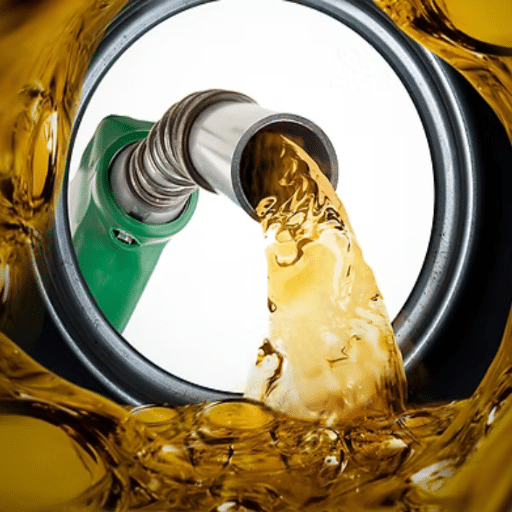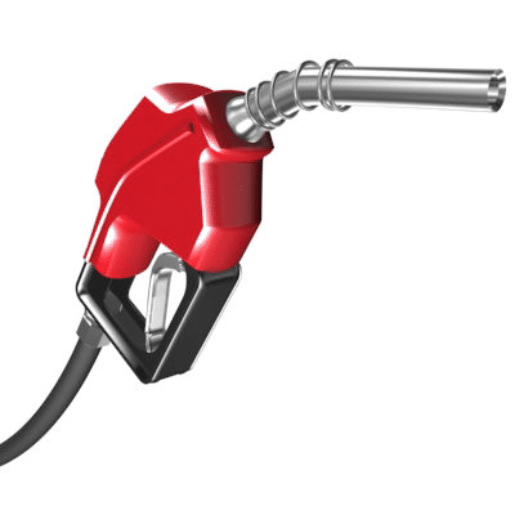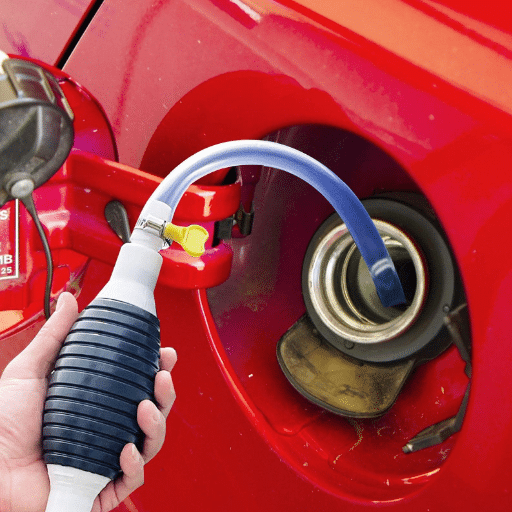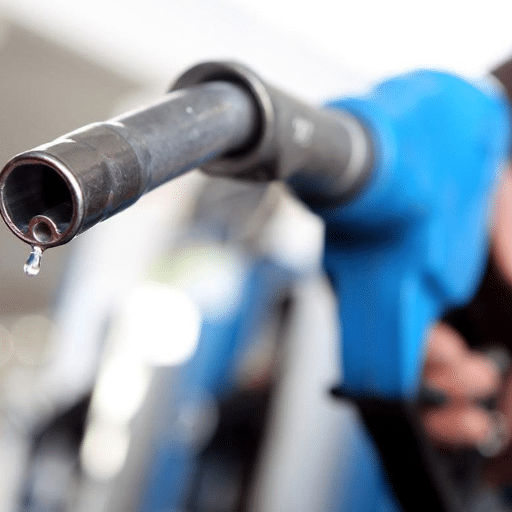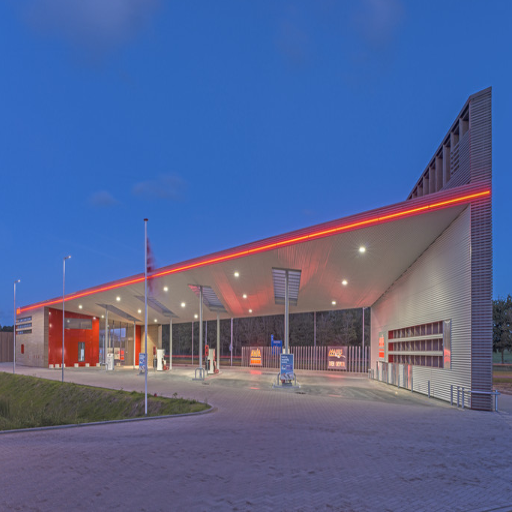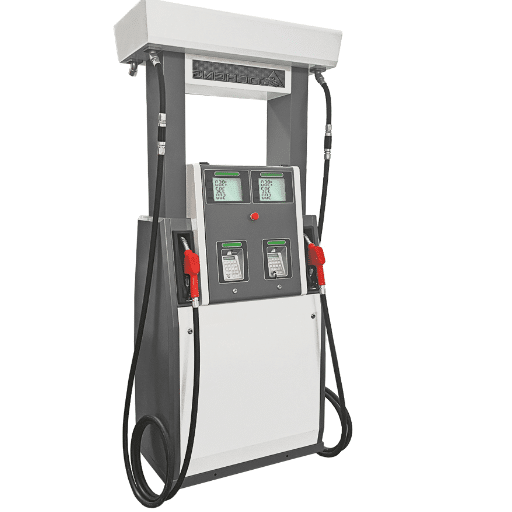Gas prices are always a favorite topic of discussion, especially when these prices seem to be going on an overnight jump. Consumers think gas stations are making huge profits every time they sell a gallon to a motorist; dare I say, the truth will shock you. But have you ever wondered about how much the gas stations earn from the fuel sales? The blog goes on to take you off into the complex realm of gas station economics, dissecting extremely small gross margins, pricing strategies, and costs involved. If you are interested in what really affects fuel prices or in the challenges faced by owners of stations, then this enlightening article will show you the truth.
How Gas Stations Make Money
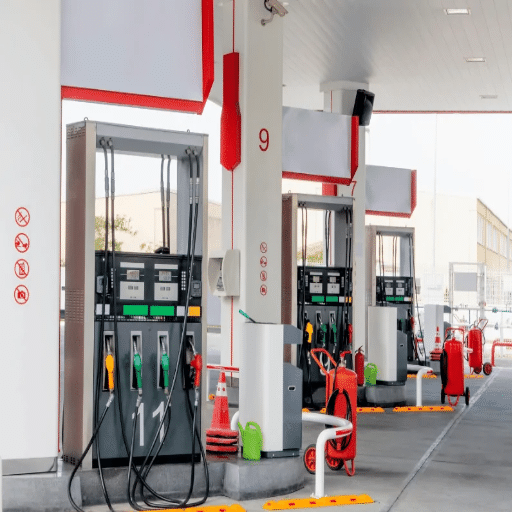
Convenience store sales are the highest-grossing component of a gas station-against fuel sales. While gas sells traffic into the station, the margin on gas is very thin-always dependent on oil prices, always facing competition and operational costs of transportation, usually credit card fees, etc. But inside the store, it could be high-margin snacks, drinks, and other necessities. The other half of profit, therefore, comes from petrol sales together with items that yield more profit inside the store, giving this whole concept toward an operating business-like operation.
Revenue Streams for Gas Stations
Gas stations derive their revenue from several sources apart from the sale of fuel. Although fuel sales may be the biggest attraction for customer traffic, they themselves provide only a fraction of profitability, due to razor-thin margins and price volatility. To balance this, additional streams are generated by gas stations:
A large chunk of profits comes from selling convenience store merchandise. Items like snacks, soda, cigarettes, and cold and hot medicines have markups running from 30-50 percent, contributing heavily to profit margins.
Modern gas stations have evolved into food concessions with offerings of sandwiches, coffee, and baked goods, aside from quick-service restaurant brands. High-margin products-especially coffee and fountain drinks-keep steady sales flowing. As per reports, prepared foods comprised more than 23% of non-fuel sales in many locations in 2022.
The increased car-wash service was instituted as a revenue source by many gas stations that provide both types of car-washing. With operational costs low compared to their pricing, car-wash services are highly profitable. Reports estimate that introducing a car wash can increase a gas station’s overall revenue by as much as 20%.
While predominantly earning a very small commission for ticket sales (usually 5-6% of ticket price), lottery tickets attract foot traffic that ends up purchasing more. For very highly trafficked locations, lottery tickets may bring in a steady flow of income.
Provides service to customers, while creating some revenue, albeit small: self-service air pumps and car vacuums are easy to maintain and typically charge just a few dollars for use.
Some gas stations derive revenue by partnering with local businesses or by leasing advertising space on-site, including digital screens at the pump or signage around the property.
Revenue diversification allows gas stations to remain profitable even when fuel demand fluctuates. This strategic, multidimensional approach has become the trademark of modern gas station operations, giving them the best opportunity for sustainable growth in a changing environment.
The Role of Gas Prices
Gas prices have always been a great determining factor in local consumer behavior and economy-the fates of global and local markets hang by price fluctuations in the fuel. The factors considered in the rise and fall of fuel prices are myriad, among others, including the price of crude oil, supply chain difficulties, geopolitical tensions, and seasonal demand. For instance, if production is limited or if foreign demand for crude oil suddenly rises, an immediate rise in pump price is observed by the consumers.
An analysis of data from recent industry reports reveals that gas prices have tended to show greater local trends, with the likes of California frequently experiencing higher prices due to additional taxes and environmental regulations, compared with states like Texas, Louisiana, which enjoy lower prices because of their geographic proximity to the oil refineries. The gas price stands at an average of $3.80 per gallon across the U.S. as of October 2023, though this number changes every week.
Such high gas prices would invariably affect everyday commuters, yet the effects mingle-in industries. Higher gas prices increase the operational costs for shipping companies, and those could be passed on to goods that are being sold. Conversely, a fall in fuel prices would give extra disposable income to households, which might stimulate spending elsewhere in the economy. Varied gas prices thus provide insight as to whether it is an economic indicator or one that has an impact on various businesses and consuming activities.
Average Gas Profit Margin Explained
Understanding the Real Numbers
Just another average in this big picture, which operates gas stations. There has been a common perception that fuel sales by themselves are huge moneymakers. In reality, however, this notion may not be held with conviction. The gross margin on a gallon of gasoline is generally between 10¢ and 15¢. However, these do not take into consideration labor costs, utility bills, rent, gasoline transportation expenses, or credit card transaction fees. It is just as these, which, when deducted, reduce the net profit to somewhere between 2 and 5 cents or less, depending on market price fluctuations.
Crude Oil
of price composition
Refining
of price composition
Distribution & Marketing
of price composition
Taxes
state and federal
The detailed breakup clarifies how external factors affect profitability; for instance, rise and fall in crude price, and refining cost, while distribution and marketing also affect margins. The data shows that 50% to 60% of the price composition of a gallon of gas is crude oil, 10% to 15% is refining, approximately 15% is distribution and marketing, and between 10% and 20% is taxation: state and federal.
Revenue Sources for Gas Station Owners
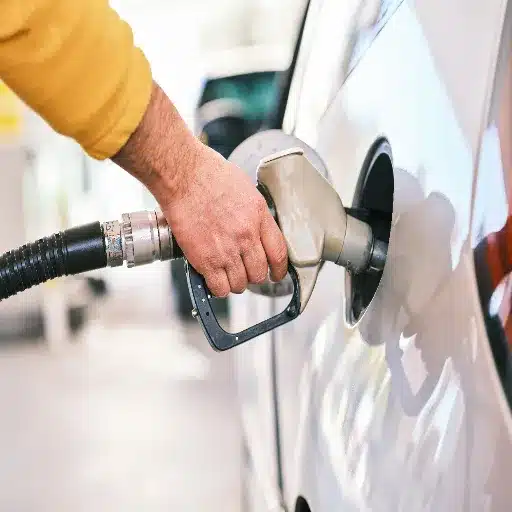
There are many sources of revenue for a gas station owner. The primary categories are as follows:
- Fueling – Gasoline and diesel sales make up a majority of revenue, but usually provide very low margins.
- Convenience Store – High-margin items such as snacks, beverages, lottery tickets, or automobile supplies make for major revenue sources.
- Car Wash – Being able to wash the car gives extra income to the gas-station owners and retains many customers paying fixed prices.
- Automotive Service – Some locations provide minor repairs or maintenance services, such as oil changes and tire inflation repairs, to boost profits.
- Advertising and Partnerships – Renting the area for advertising campaigns or hosting branded promotions could also give some extra revenue.
Diversifying revenue streams has allowed gas stations to maintain profitability while fuel prices and the economy fluctuate.
Additional Services and Products
Gas stations today are an ever-changing realm, with a plethora of additional services and products offered, according to changing customer demands. One major trend is the spawn of convenience stores. Such stores generate 44% of a given station’s revenue, promoting sales of household items, snacks, and beverages. Specialty coffee counters and prepared meals cater to the needs of busy commuters and travelers, making the mall more of an experience.
Other installations pertain to EV charging stations. Given the scenario that EV markets worldwide are expected to grow at a rate of 17% per annum in the following few years, this installation can be in line with next-generation mobility. These installations attract eco-conscious drivers, who see this as a true commitment to sustainability.
Car wash services are the next big cash cow at 60-70% gross margin. They install in favor of customers who want to get their vehicles poster-clean-fast and efficiently. Customers will be attracted to the location with a loyalty scheme, promoting repeat usage.
Lastly, we’re seeing some gas stations tie into the rise of e-commerce with parcel delivery and pickup lockers. Customers can now pick up their parcels en route, thus combining errands with a fueling stop. These spaces provide a perfect opportunity for innovative additions, turning service stations into multi-activity hubs to always be relevant in a quickly changing marketplace.
Impact of Convenience Store Sales
Convenience store sales are assumed to be an important part of the cash-flow generation for gas stations. Recent studies suggest that convenience store income contributes much to the overall acne of a station and has often been considered ahead of fuel sales as an income driver. Industry reports show that, as per the Census Bureau, U.S. convenience stores generated sales worth more than $650 billion in 2022, with food and beverage sales being an important contributor.
One of the influencing factors of sales is the growing preference of consumers for grab-and-go meals. A convenience store that most certainly meets these demands would give more traffic to the store if it offers fresh options such as sandwiches, salads, and coffee. Over 70% of customers purchase food or beverage products when they stop by.
Currently, another mode of increasing sales is by fostering branded partnerships within gas stations-diverting traffic from mini coffee shops into fast-food joints. These co-located brands attract loyal clientele, pushing them to go back again for another round. Research claims a 30-40 per cent boost to cross-category sales in gas stations having auxiliary convenience offers.
Offering the perfect blend of quality, convenience, and diversity, these stores have become certified stops for the modern fast-moving customer, reflecting their effects on today’s retail economy.
Fuel Loyalty Programs and Promotions
Fuel loyalty programs and targeted promotions turned into essential customer retention and acquisition tools for gas stations. These programs reward returning customers with various sponsored discounts, promotions, or special offers to meet the demands of the sensible-minded consumer. Recent statistics from industry analyses have revealed that 60% plus drivers in the U.S. use fuel reward programs, stating that they have saved a substantial amount on fuel prices.
Personal promotion via apps is another booming landscape. For instance, fuel chains say they have seen anywhere between a 20% and 30% increase in customer engagement and purchases when targeted discounts are applied based on purchasing behavior. Further, the introduction of innovative technologies within digital wallets and connected vehicle integration has made it possible to minimize the hassles surrounding loyalty program usage, facilitating an easy transaction for the user. These strategies work towards amplifying customer satisfaction, contributing to higher sales and consequent long-term brand loyalty for fuel retailing.
Understanding Profit Margins in the Gas Industry
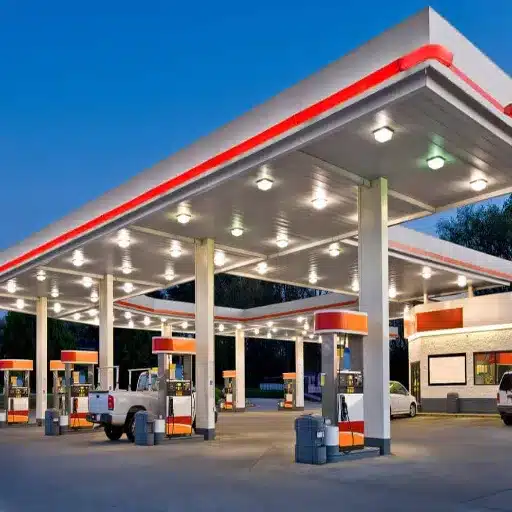
What is a Profit Margin?
Profit margin is a financial measurement that calculates the percentage of revenue that a company can hold onto as a profit. All expenses have been deducted. It is a vital indicator of a firm’s financial health and operational efficiency. Profit margins can be of different types: gross, operating, or net:
- Gross Profit Margin: Shows profit after subtracting the cost of goods sold (COGS) from total revenue and measures the effectiveness of production. A business having revenue of $500,000 and a COGS of $300,000 would yield a gross profit margin of 40%.
- Operating Profit Margin: After deducting operating expenses such as rent, wages, and utilities, in addition to COGS, it measures the profitability of core business operations. Generally, a high operating margin indicates that the business is controlling costs effectively and running a tight operation.
- Net Profit Margin: It is the percentage of revenue remaining after all expenses, including taxes, interest, and one-time costs; it measures businesses’ overall profitability. For example, a 15% profit margin means that, for a dollar’s worth of revenue, the business makes $0.15 in profit.
Profits create differences between industries. For instance, many technology companies enjoy high net profit margins of 20%-30%, whereas retail stores have low net profit margins, in the range of 2%-5%. Higher profit margins imply better profitability and financial security, but there are external factors that make them variable, such as competition, economic conditions, or operational efficiency.
Grasping profit margins allows businesses to look for possible areas to reduce costs, consider pricing strategies, and analyze their performance from a financial standpoint to grow sustainably.
Factors Affecting Profit Margins for Gas Stations
The profit margins in gas stations are, thus, influenced by several key factors that reflect the complex dynamics within the fuel retail industry. Some of those factors are:
| Factor | Impact on Margins | Description |
|---|---|---|
| Fuel Price Fluctuation | High Impact | Crude oil price changes directly affect wholesale costs and retail margins |
| Operational Costs | Medium-High Impact | Rent, utilities, salaries, and maintenance costs reduce net profits |
| Non-fuel Sales | High Impact (Positive) | Higher margin convenience store items can exceed 30% profit margins |
| Competition | Medium Impact | Price wars in competitive markets reduce profitability |
| Loyalty Programs | Medium Impact (Positive) | Customer retention increases sales of high-margin products |
| Technology | Medium Impact (Positive) | Automated systems reduce operational costs and improve efficiency |
Fuel Price and Fluctuation: Fuel sales are of utmost importance to gas stations, and the actual margin on fuel is considered to be very slim. There may be times when, depending on global supply and demand, geopolitical issues, and natural disasters, any fluctuation in the price of crude oil may make a difference in profitability. Recent studies show that gasoline is marked up by retailers just about 10-15 cents per gallon, excluding operating costs.
Operational costs: Operating expenses like rent, utilities, salaries, and maintenance are some pertinent factors that affect average returns. Rising utility costs and wage hikes eat into profits, and so do independent gas station operators. These are some of the factors that add to operational costs since one has to comply with many regulatory standards.
Non-fuel Sales: These are revenues from the sale of a variety of associated products, e.g., convenience store merchandise, food, and beverages. These products normally have higher profit margins when compared to fuel prices, with some suggesting the margin of in-store products can exceed 30% in some cases. A fully functional convenience store can offset at least some of the very low fuel margins.
Competition: Usually, competition among gas stations tends to go to the detriment of profitability for. In a market where there are a lot of competitive stations, though, their prices are based on customers’ willingness to fare lower. On the other hand, stations standing in relatively less competitive positions or along the highway fare better in margins.
Loyalty Programs and Customer Retention: Loyalty programs offered by many gas stations will keep customers returning home, thus increasing sales and profitability. Loyal customers will add to purchases of high-margin non-fuel products.
Technological Advancements: The introduction of technology, such as automated inventory control and digital payment methods, brings about efficiency and a reduction in operational costs, along with gains on the margin. Some stations have started to install electric vehicle (EV) chargers, cater to the expanding EV market, and create a diversification of revenue.
These factors, coupled with market trends, would help gas stations come up with certain plans toward better profitability and sustainability in this competitive and ever-changing industry.
Comparison of Gas Profit Margins Across Different Stations
Gas profit margins vary greatly, depending on location, ownership of the service station, and the business model adopted. The estimated profit margin per gallon of gasoline after accounting for retail price differences, refining costs, and distribution costs ranges between 10 and 15 cents. The smaller, independent stations usually have less margin versus the chains, given that they have limited bargaining power on the wholesale price.
From a regional standpoint, state taxes and environmental regulations are key players in determining profit. For example, high fuel taxes and a stringent emission standard in California may lead to high pump prices, but that does not necessarily translate into higher profits for the owner of a service station. As such, these gas stations balance out their costs through other income streams like convenience store sales or fees for car washing or EV charging.
Biggies like Shell and ExxonMobil stand to enjoy relatively stable profit margins due to their bigger economies of scale, and varied revenue channels, whereas smaller and often family-owned stations tend to price competitively to maintain their local customers; hence, their margins chamber more limited. Diversification, such as adding EV chargers or premium fuels, has become a very big factor for maintaining profits in today’s rapidly changing energy market.
Challenges Faced by Gas Station Owners
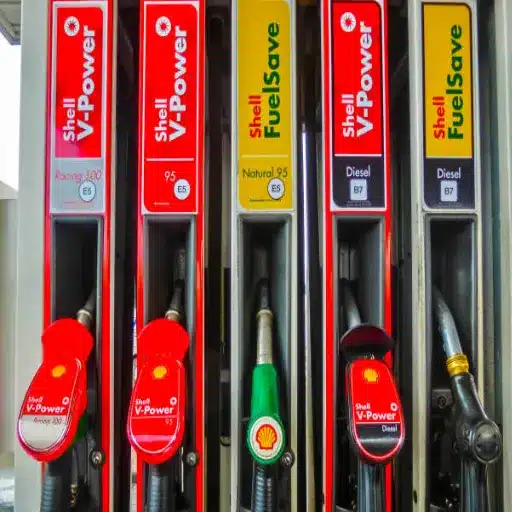
Key Industry Challenges
There are several issues experienced by gas station owners that ultimately affect the day-to-day operation and profitability of their respective gas stations. A change in fuel prices that arises due to the world markets and supply chains can make it difficult to keep profit margins stable. Increased competition from the big leagues and independent gas stations puts pressure on pricing and customer retention activities. Laws and regulations require such stations to meet certain environmental standards and are an added cost to their operations. The other side of the coin to this is that the rise of electric vehicles brings a fear of a short life span for gasoline usage and requires investing in infrastructure to cater to the new consumer need of EV stations. Hence, managing the gas station attracts a bit of complexity and continues to be a changing business.
Operating Costs and Overheads
Managing a gas station involves massive costs and overhead, eating into profits. The major one is the fuel, which is a considerable part of the operating expenses. Gas station operators in fuel sales are working with very thin margins, and in some cases, earnings amount to just a few cents per gallon sold. In order to close the gap on these slim margins, store sales are crucial, earning higher margins from snack sales, beverages, and various retail goods.
Labor is another huge expense, as it takes employees to handle all customer service, maintenance, and operations. According to recent industry reports, the pay range for gas station employees in the U.S. runs between $12 and $15 an hour, depending on location and seniority. Having a 24/7 station also contributes to labor costs, as one should maintain a reasonable staffing level during all hours.
Utilities can also be a source of overhead, such as presumably electricity, water, and heating, and those can change from one season to another. Locations with a car wash use more electricity and water, whereas energy-efficient equipment or renewable energy options like solar panels can alleviate these costs as time passes. The maintenance of equipment, like fuel pumps, storage tanks, and POS systems, also contributes to operational costs.
On the regulatory side, gas stations have to pay for various permits and inspections and ensure compliance with environmental standards governing fuel storage and emissions. Upgrades to infrastructure to achieve a modern standard, be it the installation of leak detection systems or an environmentally friendly storage tank, place a considerable financial pressure.
Finally, the adoption of newer trends such as EV charging stations will record new investments operationally. Depending on the type of charger, installation for one EV charging station could be as low as $10,000 or as high as $40,000. Despite the initial expenditure, such upgrades are fast becoming essential for competitiveness with changing consumer preferences and dwindling gasoline demand. Cost management and service diversification, hence, continue to be very central for the financial sustainability of gas stations.
Impact of Market Fluctuations on Profitability
Market fluctuations greatly influence the profitability of gas stations, and of these, fluctuations in crude oil prices stand out as the main driver. Crude oil prices may be subject to huge volatility depending on geopolitical tension, production restrictions set by major suppliers, or shifts in demand on a global scale. For instance, when uncertainty looms large on the economy or world affairs, the prices of crude oil go up, and the few gas stations, which have been slow to re-price due to margin squeeze, will find their profits squeezed. On the contrary, in line with excess supply or depressed demand, the wholesale gasoline prices will decline, which, conversely, may then enhance the profitability of gas stations if retail prices fall at a slower rate.
According to recent industry trends, gasoline demand in the United States is expected to decline, fueled in part by the increased penetration of electric vehicles. The International Energy Agency (IEA) estimates that total car sales worldwide will see EVs reach well over a 30% share by 2030, thus impacting fuel demand considerably. Then operational costs, such as labor and utilities, rise with inflation, without revenues keeping up their pace, further weakening fuel margins.
A number of surprising disturbances can have temporary short-term impacts on supply and demand. Sudden supply interruptions due to hurricanes in oil-producing localities can disrupt supply chains and cause huge regional price spikes. Seasonal effects also come into play as some gasoline demand hits its peak during summer months, the “driving season,” and perils prices and revenue in the cold period.
All in all, gas stations must keep abreast of market changes, diversify their income with other services such as convenience stores, car washes, or EV charging, and plan their pricing dynamically to counter profitability shocks created by these fluctuations. With enough flexibility on their end, gas station operators would ultimately weather the uncertainties brought about by market volatility.
Competition Among Gas Stations
Additional competitive elements affecting the gas station environment include fluctuating fuel prices, shifting customer preferences, and alterations in vehicle technology. Industry reports cite over 145,000 gas stations in the United States alone, with such major brands as Shell, ExxonMobil, and Chevron controlling significant market shares. Independent gas stations also matter since they usually compete on price and localization to lure customers.
In an attempt to compete, many gas stations are increasingly involved in non-fuel sales. For example, with the rise in popularity of EVs, some are installing EV chargers, with some projections stating the number of charging stations in the U.S. will surpass 180,000 by 2030 to accommodate demand. Other gas station owners are financing a convenience store, with research indicating that more than 80% of gas stations in the U.S. have convenience stores, which generate a significant proportion of revenue unrelated to fuel sales.
Price wars remain at the forefront of competition in which gas stations attempt to attract drivers by offering the lowest price in their locality. Research shows that even a small drop in fuel price triggers buyer behavior of driving to a station. However, a large cut in fuel price could jeopardize its barely-thin profit margin, so it remains imperative for the stations to find a balance between pricing policies and long-run sustainability. Established member discount programs, loyalty cards, and promotions also work in retaining loyal customers.
Technological evolution has changed how gas stations compete with each other. Mobile apps that reveal gas price info in real time, as well as reward programs and promotions, give consumers the power to choose between stations, ultimately forcing the operators to remain relevant digitally. Also, employing contactless payment and frictionless digital experiences helps to enhance the user experience for their tech-savvy customers.
With services, pricing, and technologies as differentiators, gas stations will flourish even in fast-changing conditions. Being truly innovative and responsive will thus be a recipe for success in this highly competitive arena.
Future Trends in Gas Station Profitability
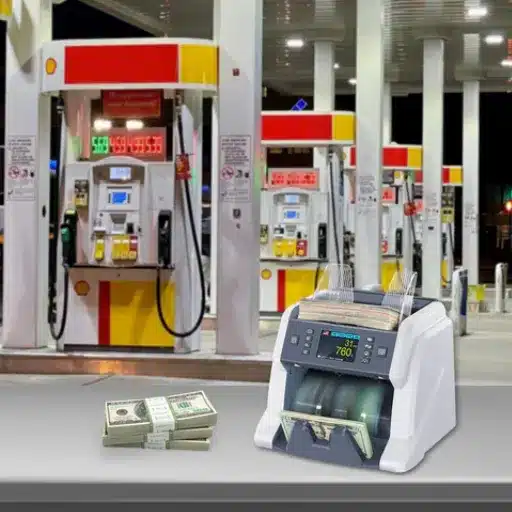
Emerging Opportunities and Challenges
With the rise of electric vehicles, gas stations are increasingly installing EV charging stations. This business change allows them to open new revenue streams and cater to an emerging market segment.
Convenience stores attached to gas stations have become a significant source of revenue. By diversifying product offerings with items such as fresh food, coffee, and household essentials, they might attract a broader customer base.
Digital wallet and contactless payment acceptance provide an awful checkout experience that may enhance and attract return visits.
Gas stations striving for sustainability, such as biofuel options or energy-efficient infrastructure, may perhaps attract interest from green consumers.
Leveraging data points collected from customers to tailor the relevant promotions, loyalty programs, and services will increase revenue-generating and increase customer retention.
Gas stations that adopt these trends will remain relevant and profitable in an ever-changing industry at their own cost.
Impact of Electric Vehicles on Gas Sales
The ascendancy of EVs is making massive dents in the gas barreling business. As more and more EVs get into the world, the demand for fossil fuels has dwindled at the newsstand, demanding that the industry rethink its business paradigm. Many EV owners charge at a home station or public charging network, with fewer visits to the gas station. According to the industry trends, some gas stations are now upping their offers, installing EV charging stations, or focusing more on their retail outlets or sustainable fuel options. The journey might bring about temporary hurdles, with the adaptation to integrate EV infrastructure and the owners’ changing behaviors may well see gas stations make it through in the long run.
Adapting Business Models for Increased Profit
Opportunities for profit maximisation would profitably consider diversification of offerings to meet changing consumer needs. This would include incorporating EV charging stations, expanding convenience-focused retail offerings, and exploring sustainable fuel alternatives. By proactively aligning with industry trends and consumer demand, we maintain our relevance and create new revenue streams for long-term growth and profit.
Innovations in Fuel Retailing
The innovations in fuel retailing are, therefore, reshaping the industry to better address contemporary consumer needs and environmental considerations. First is the need to provide EV charging infrastructure. As global demand for electric vehicles increases, few fuel retailers remain able to compete successfully without offering fast and convenient EV charging options, as far as sustainability is concerned.
Second, digital wallets and mobile apps have also made payments more convenient for consumers. They allow contactless payments, loyalty programs, and even pre-order options to be granted to their customers, providing an ever-so-wrapped customized experience. These experiments contribute to the improvement of operational efficiency and intensify interaction with customers.
Thirdly, sustainability issues must arise. This includes stages such as biofuel, hydrogen refuelling stations, and renewable sources of energy, which speak about carbon remuneration. One who advances such means will try to align himself with global climate goals and also appeal to environmentally conscientious consumers.
Fuel retailers are then in a position to diversify into career options, address emerging market requirements, and attain sustained growth amidst an intense and ever-changing industry.
Conclusion
The economics of gas stations reveal a complex business model where fuel sales, despite driving customer traffic, generate surprisingly thin profit margins of just 2-5 cents per gallon. The real profitability comes from convenience store sales, car washes, and additional services that offer much higher margins of 30-50% or more.
Gas station owners face numerous challenges, including volatile fuel prices, increasing operational costs, intense competition, and the growing impact of electric vehicles on traditional fuel demand. However, those who successfully diversify their revenue streams, embrace technology, and adapt to changing consumer preferences position themselves for long-term success.
The future of gas station profitability lies in transformation – evolving from simple fuel dispensers to multi-service convenience hubs that offer EV charging, enhanced food services, and digital integration. Understanding these economic realities helps consumers appreciate the complex dynamics behind the pump prices they see every day, while providing valuable insights for industry stakeholders navigating this evolving landscape.
Reference Sources
“Governing the Gasoline Spigot: Gas Stations and the Transition Away from Gasoline”
“Fueling Alternatives: Gas Station Choice and the Implications for Electric Charging”
Frequently Asked Questions (FAQs)
How do gas stations actually earn money?
Gas stations make a profit on gas sales via oil price markups, though the profit margin per gallon is extremely slim: depending on the time and geographic location, it may range from less than a cent to about ten cents. Even so, it is advantageous to sell as much fuel as possible. Besides gasoline sales, gas stations earn their keep through the sale of items from convenience stores, which tend to have a higher margin per sale.
What is the average profit margin for gas stations?
The average profit margin of a gas station goes through heavy fluctuations, depending mainly on its location and its course of operation. Industry data would suggest that a profit margin on gas can run as low as 1.5 cents a gallon, especially during times of fluctuating fuel prices. Gas stations, on the other hand, sell different goods from their stores to cover the usually low profits from selling petrol.
How much does a gas station make from selling a gallon of gas?
Gas stations make almost negligible profits off each gallon of gas sold: allotting for variable costs such as gas tax or price of oil, they would earn just a few cents per gallon of fuel. The big bucks actually come from secondary sales-such as snacks and drinks-which have much higher markups and contribute a great deal to the station’s revenues.
What are some factors affecting the profits of a gas station?
There are several factors that impact gas station profits, including fuel costs, competing stations in the area, and those pesky oil prices. Besides that, incidents that result in property damage or simply the maintenance expenses for running a gas station can eat into their profits. Gas stations that efficiently implement marketing and management strategies such as customer loyalty programs and promotions can also enhance their profit levels.
Besides just purchasing gas, what else brings people to the gas station?
People also visit gas stations to shop for convenience items. Such impulse behaviors of customers would strongly contribute to the profitability of gas stations, as snacks, soft drinks, and auto supplies generally have higher profit margins than the fuel itself.
How do underground storage tanks affect gas station operations?
Underground storage tanks are essential for gas station operations because they store the gallons of fuel that are sold to consumers. Neglecting proper maintenance and failing to comply with environmental regulations on the integrity of these tanks would lead to leaks and property damage and put station owners in severe financial jeopardy.
How do gas taxes impact station profitability?
Gas tax poses a significant effect on the profitability of gas stations because it is added to the price per gallon, hence explaining how much profit a station can make on every sale. Stations must price competitively against such taxes so as not to lose customers, and must at the same time maintain reasonable profit margins.
Who gives out industry data on gas station profits?
Industry data about gas station profits and operational trends is provided by the National Association of Convenience Stores. The association is conducting research and surveys to better help the station owners understand the market dynamics and implement strategies that will increase the profitability of the business.

